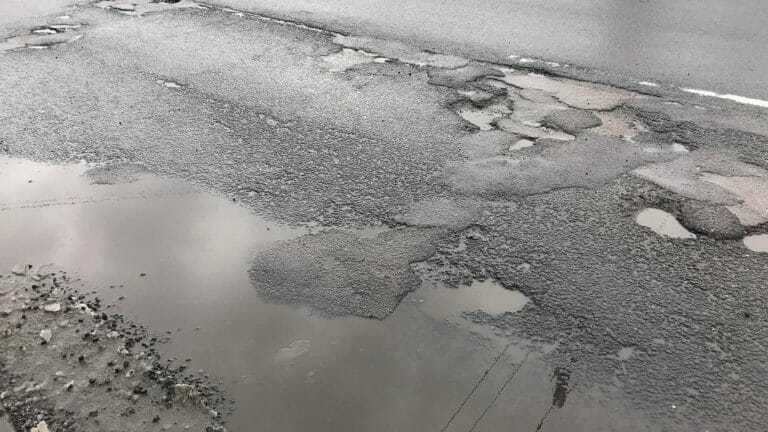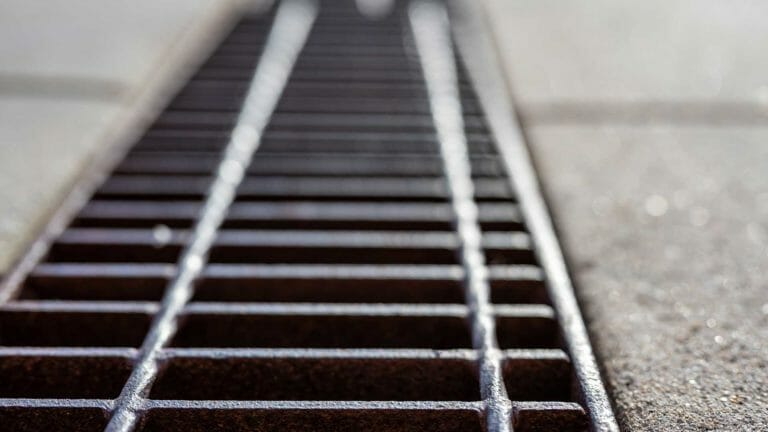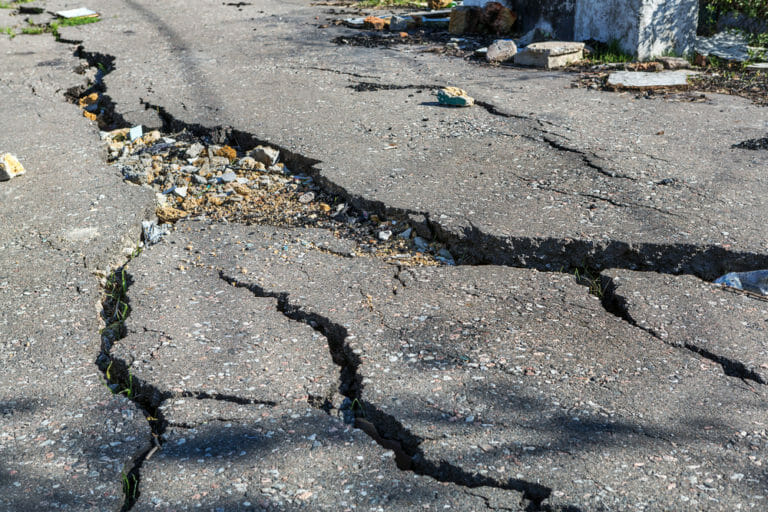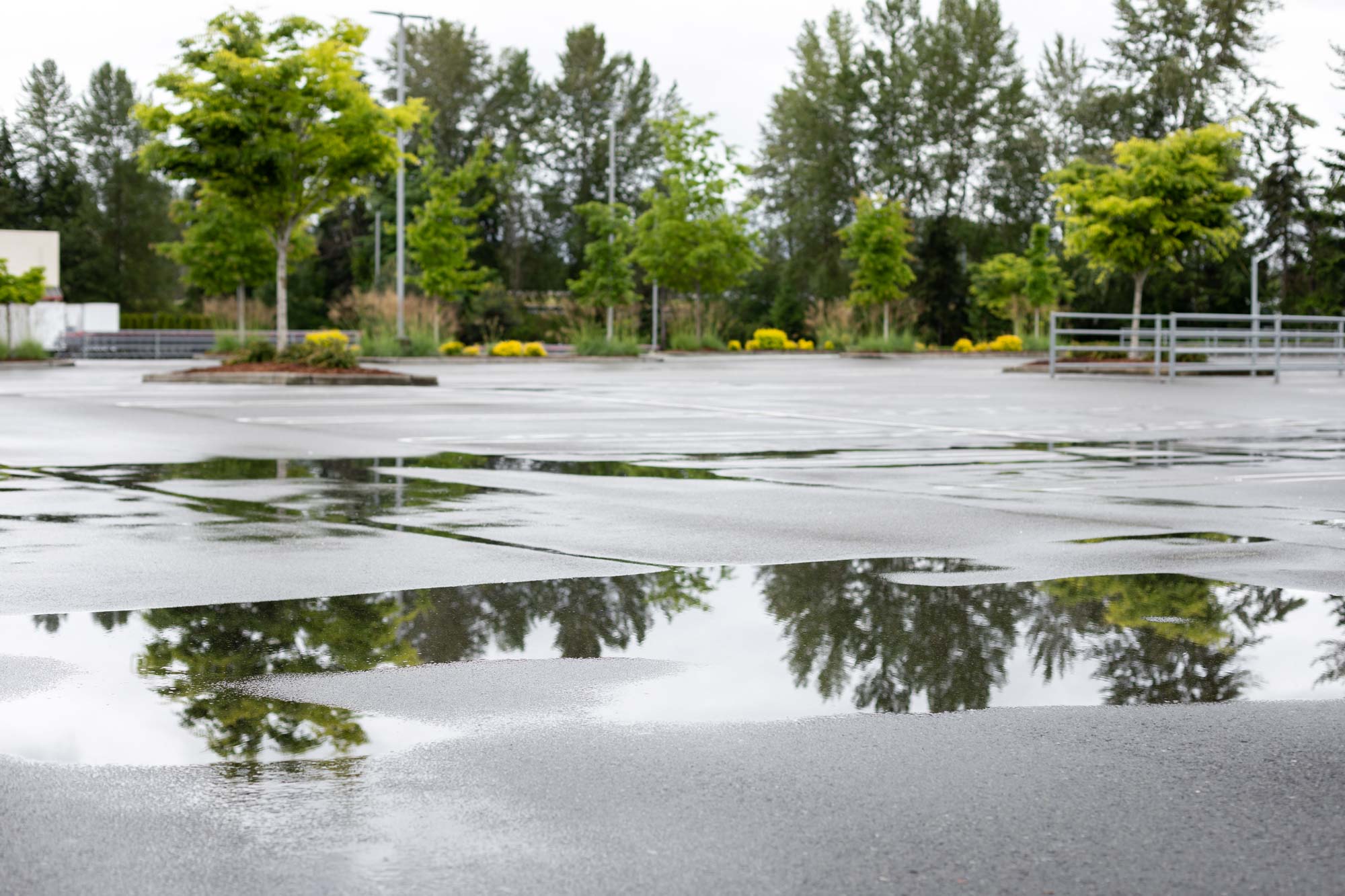How Do You Fix Standing Water on Asphalt?
Asphalt is a popular material for parking lots and driveways due to its long-term durability. However, standing water can be a threat to the quality of your asphalt, putting your expensive investment at risk. So how can you fix standing water on your asphalt? keep reading to figure out how!
What Causes Standing Water to Form on Asphalt?
Standing water can be a result of many occurrences. The most common reasons are improper asphalt maintenance, low-quality asphalt, cracking or potholes, improper grading, improper drainage system, and poor asphalt installation. While the cause may be undetermined, eliminating standing water should be a top priority for business owners and homeowners alike.

Why Is Standing Water Damaging?
Asphalt is a highly porous material. This means that when standing water is left sitting on your driveway or parking lot, it seeps into the pores of your asphalt. The water travels down to your base and subgrade layer, freezing and heating up as the weather changes. Once your asphalt is penetrated by water, it is almost impossible to reverse the damage. Water damage causes cracking, heaving, and the eventual deterioration of your asphalt.

How to Fix Standing Water on Asphalt
So is it possible to fix standing water on your asphalt? Yes, don’t worry! There are steps you can take to protect your asphalt and eliminate water for good.
Install a drainage system
Many times standing water is due to improper drainage. Installing a high-quality drainage system such as french drains, or catch basins, as well as fixing your downspouts and gutters help to prevent water from pooling on your driveway or parking lot.
Repair cracks & potholes
While water damage can’t be reversed, repairing cracks and potholes can prevent further amounts of water from seeping into your asphalt. Make sure to contact a trusted paving company to repair your asphalt.
Reapply Sealcoat
To help block out water, we recommend applying a seal coat every 1-3 years. This will seal even the smallest of cracks, and prevent water from infiltrating your asphalt.
The best way to prevent pooling water from forming is to hire a reliable asphalt paving company. Our experienced team will install your asphalt base, do any patching, and ensure you have a proper drainage system in place. It is also very important that after your asphalt is applied, you wait the allotted amount of time before using your driveway or parking lot. This is because, if driven on too soon, you can cause cracking.

Conclusion
Maintaining your asphalt driveway or parking lot is a big undertaking. To ensure your asphalt lasts as long as possible, reach out to the team at NYS Enterprises. We’ve helped countless homeowners and business owners across the Seattle area remove standing water on their driveways and parking lots.
Contact NYS Enterprises
Do you have standing water on your parking lot or driveway? Contact NYS Enterprises today! Our experienced team is ready to help with all your asphalt needs in the Seattle area.
Contact NYS Enterprises
Contact NYS today to learn more about our commercial asphalt services in the Seattle area.
Get Started




